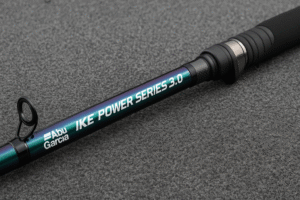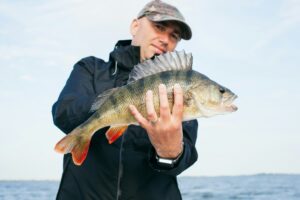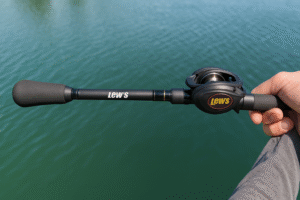Night Fishing Secrets: Where and How to Catch More Fish
Fishing is fun during the day, but have you ever tried it at night? Night fishing is a thrilling way to enjoy the water, escape crowds, and catch more active fish after the sun goes down.
Whether you’re casting a line in the ocean or a quiet lake, this guide will teach you everything you need to know about night fishing in 2025. Let’s dive in!
What Fish Can You Catch While Night Fishing?
Many fish species hunt and feed at night, making them easier to catch in the dark. The types of fish you’ll find depend on whether you’re fishing in saltwater or freshwater.
Saltwater Night Fishing Targets:
Snook are a great target if you’re fishing in the ocean or coastal areas. These fish love warm waters and often hide near docks or mangroves at night, especially around high tide.
Redfish are another popular catch—they use their strong sense of smell to hunt in shallow bays or grassy flats. For a bigger challenge, try tarpon, known as the “silver king.” These powerful fish chase prey near lights or channels after sunset. Don’t forget the flounder, which lies flat on the ocean floor. Use live shrimp to tempt them out of hiding.
Freshwater Night Fishing Targets:
In lakes and rivers, catfish are a top choice after dark. They rely on their whiskers to find stinky baits like chicken liver or worms. Largemouth bass also become active at night, often lurking in shallow water. Topwater lures that mimic frogs or insects work well for them.
Walleye, with their super-sensitive eyes, hunt near rocky bottoms or drop-offs in low light. Crappies gather around underwater structures like brush piles—try using small jigs or minnows under a light to attract them.
Where Should You Go Night Fishing?
You don’t need to travel far to enjoy night fishing! Docks and piers are excellent spots because lights attract baitfish, which draw bigger predators like snook and catfish.
Shallow bays are ideal for redfish and flounder, especially when the tide rises. Lakes and ponds are perfect for bass and crappie, which often swim closer to shore at night. If you’re near a river, look for walleye in slow-moving currents or calm eddies.
Always check local rules before heading out. Some fishing areas close at sunset, while others allow 24-hour access. Public parks, marinas, and designated fishing piers are good places to start.
How to Fish at Night: Simple Tips for Success
Night fishing isn’t hard, but you’ll need to adjust your usual routine. Start by using underwater lights—green or white lights attract plankton, which brings in baitfish and the bigger fish that eat them.
Slow down your technique, too. Fish rely more on vibrations and scent in the dark, so let your bait sit longer or move it slowly. Topwater lures like buzzbaits or poppers create splashes that bass or snook can’t resist.
Live bait, such as worms, shrimp, or minnows, is also effective because fish can smell them easily.
Here’s how to make the most of your night fishing trip:
Light Up the Water
Fish are drawn to light. Use a submersible green LED light to attract plankton and baitfish.
Bigger fish like snook, crappie, or catfish will follow. On a boat, hang lanterns over the sides to create a glow. If you’re on shore, shine a flashlight on the water to see strikes.
Slow Your Retrieval
Fish can’t see as well at night, so they depend on sound and smell. Drag your bait or lure slowly across the bottom or through the water. For example:
Let live bait sit for 2–3 minutes before reeling in. Use a “stop-and-go” retrieve with lures to mimic injured prey.
Choose the Right Lures
Dark-colored lures (black, purple, or blue) create better silhouettes at night. Try these options:
Topwater frogs: Perfect for bass in shallow water.
Glow-in-the-dark jigs: Great for walleye or crappie.
Scented soft plastics: Add flavor to attract catfish or redfish.
Listen for Activity
Turn off your lights occasionally and listen for splashes or feeding sounds. Fish often give away their location by chasing baitfish near the surface.
Since it’s harder to see bites, keep your line slightly tight. Use a lighted bobber or attach a small glow stick to your rod tip to detect nibbles.
Fish feed more actively during a full moon when there’s extra light. During a new moon, focus on areas with artificial lighting (docks, bridges).
Patience is key. Fish can feel vibrations in the water, so avoid loud noises. Stay in one spot for at least 20 minutes before moving. If you’re not getting bites, try changing your bait or adjusting the depth of your line.
What Gear Do You Need for Night Fishing?
Packing the right tools makes night fishing safer and more fun. Lighting is crucial—bring a headlamp with a red light mode to avoid spooking fish. Glow sticks or battery-powered lanterns can brighten your boat or dock. For your fishing setup, a medium-heavy rod works best for handling big fish like tarpon or catfish. Use strong braided line (20–30 lb test) to feel subtle bites, and circle hooks make catch-and-release easier.
Safety gear is a must. Always wear a life jacket on a boat, and pack a first aid kit, bug spray, and a whistle. Bring a fully charged phone in a waterproof case for emergencies. Don’t forget a cooler with ice for your catch, plus snacks, water, and warm clothes. Nights near the water can get chilly!
Night Fishing Safety Tips
Fish with a buddy whenever possible—never go alone. Tell someone where you’re going and when you plan to return. Check the weather forecast ahead of time to avoid storms or strong winds. Watch your step on slippery rocks, roots, or wet surfaces. Carry a flashlight to check your surroundings, and keep your gear organized to prevent tripping.
Why Night Fishing Is an Adventure You’ll Never Forget
Night fishing lets you experience nature in a whole new way. Picture the stars reflecting on the water while frogs croak and fish splash nearby. The thrill of feeling a tug on your line in the dark is unforgettable. You’ll also escape the summer heat and daytime crowds. Even if you don’t catch anything, the peacefulness of the outdoors at night is rewarding.
Night fishing is easier than you think! With the right gear, a good location, and a little practice, you’ll be reeling in fish while everyone else is asleep. Stay safe, respect nature, and enjoy the adventure. The water might look different at night, but that’s what makes it magical. Grab your rod, turn on your headlamp, and see what’s biting after dark!





